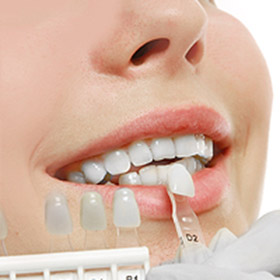 Have you heard of the term “Periodontics”? If not, you are like many of our patients. Periodontics is the area of dentistry that focuses on the health of the gums. It is not widely known, and so most people go about their oral hygiene routine without ever thinking about it. In fact, if you were to ask most people what oral health issue they were concerned about, the most common answer would be cavities. It is rare for people to think about their gum health, but this is actually one of the most important functions of a dentist – keeping your gums healthy.
Have you heard of the term “Periodontics”? If not, you are like many of our patients. Periodontics is the area of dentistry that focuses on the health of the gums. It is not widely known, and so most people go about their oral hygiene routine without ever thinking about it. In fact, if you were to ask most people what oral health issue they were concerned about, the most common answer would be cavities. It is rare for people to think about their gum health, but this is actually one of the most important functions of a dentist – keeping your gums healthy.
The majority of adults will experience red and swollen gums at some point in their lifetime with many adults getting gingivitis or more serious periodontal disease. It normally occurs when plaque and tartar get trapped underneath the gum tissue, on top of the tooth. Since this area is very difficult to thoroughly clean at home, even with regular brushing and flossing, the build up remains there, causing immense irritation. The gums respond by swelling, bleeding and becoming uncomfortable. They may also start to recede or pull away from the teeth, creating pockets in the gum tissue.
What is the risk of my gums receding?
Since gum recession exposes the lower structure and roots of your tooth, these areas can become infected. When this happens, you can experience bone loss, your teeth becoming loose, and eventually tooth loss. Statistically, gum disease is a leading cause of adult tooth loss so if you don’t want to end up wearing dentures, you need to pay attention to the health of your gums. Periodontics is focused on gum health so we can often prevent tooth loss down the road.
If my gums are receding, how can they be treated?
The first thing we need to do is clean the area by removing the bacteria, plaque, and tartar. This is done with a deep cleaning that is sometimes completed in four separate appointments to ensure that you remain comfortable. If the disease is isolated to one area, that will make it faster. Once the irritant (plaque) has been removed, it becomes time to work on the gums themselves. There are several ways to restore the gums, and since every patient is different, we can make a specific recommendation during your dental exam.
What you can do at home.
If you want to prevent the need for a deep cleaning or restorative gum procedure, you should be careful to brush your teeth in a circular motion, moving the plaque towards the center of your mouth and away from your gums. Flossing is also an important tool in fighting gum disease since plaque can become trapped in between the teeth. In our dental office, we understand that some of our patients do not enjoy flossing. There are other flossing tools that you can purchase to make the job easier that are sold at your local grocery or drugstore. Those that still do not want to floss should consider using an electric toothbrush since they can do a better job of getting your teeth clean than a traditional toothbrush would. Additionally, keeping regular teeth cleaning appointments is one of the best defenses you have against gum disease.
Related Posts
Common Periodontics Procedures from a General Dentist
Periodontics is a broad term that encompasses a wide range of treatments and procedures related to periodontal, or gum, health. If a general dentist has diagnosed gum disease, they will recommend the …
How Periodontic Treatment Can Make Your Daily Dental Routine Easier
Periodontics focuses on preventing, diagnosing, and treating the issues that affect your gums, like gum disease. Gum disease is one of the most common reasons that people head to a dentist, and …
Three Tips for Choosing the Right Dentist for Periodontics Treatment
Have you ever been let down by the quality of care you received during a dental visit? Unfortunately, this may be an experience for some patients who are seeking periodontics treatment. The …
Flossing Reaches All Surfaces Of Teeth
While the surfaces of teeth need regular dental hygiene, the structure needs the same level of care. PeriodonticsWe offer treatment for the structures that are crucial to supporting and surrounding teeth. If these structures do not …






